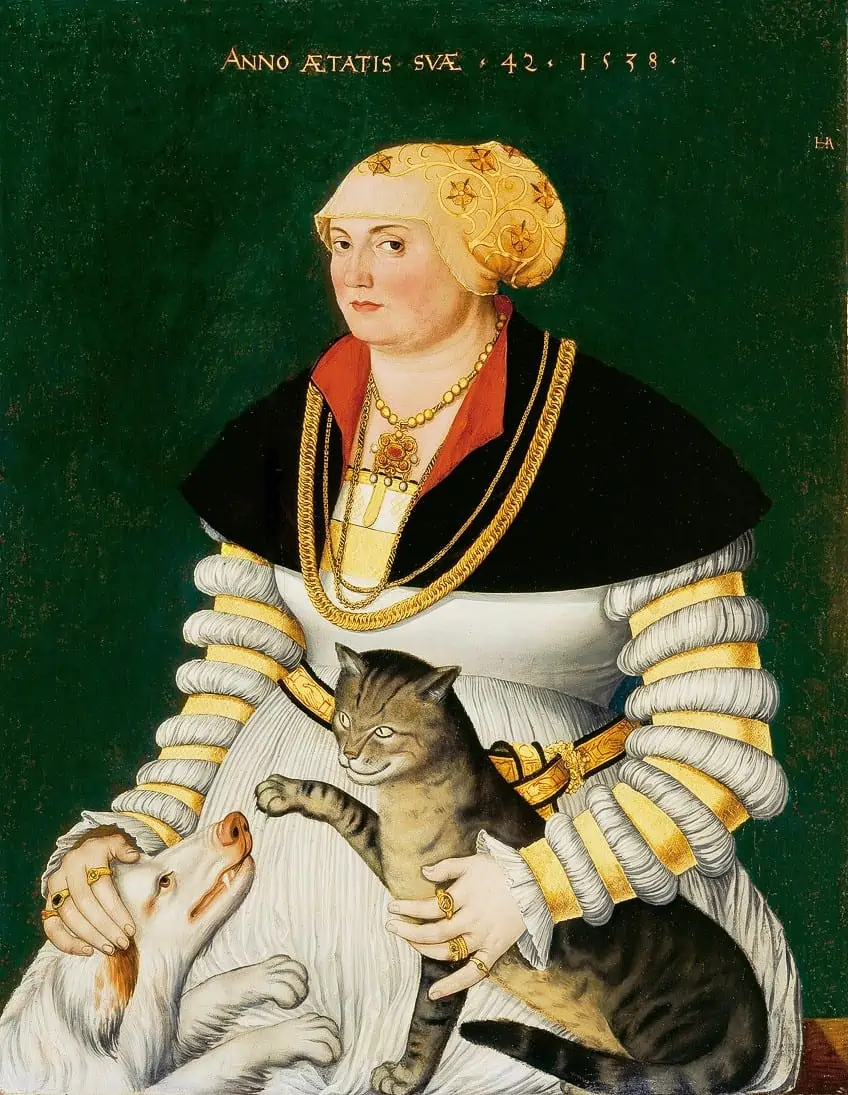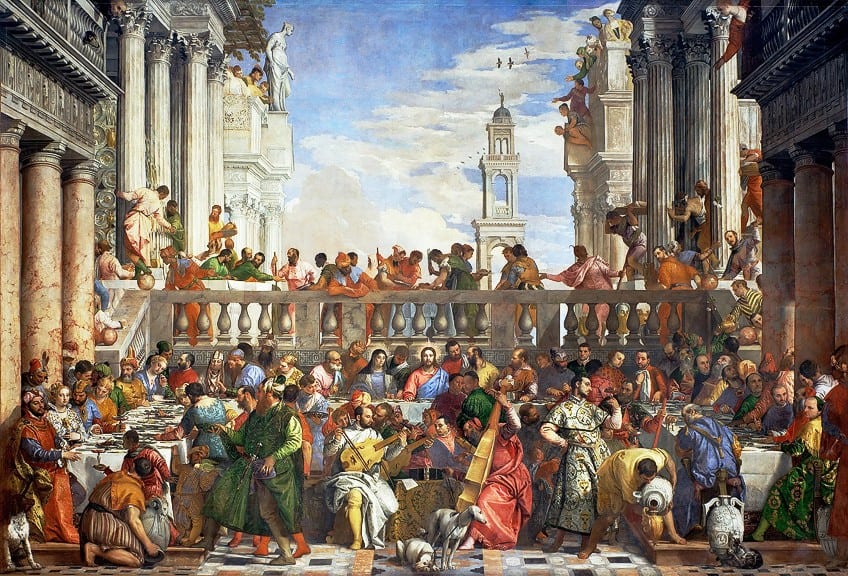Medieval Cat Paintings – The Best Renaissance Paintings of Cats
Cats have been depicted in our art for many centuries. These domesticated felines offer humans endless hours of company and amusement. Today, we will be specifically looking at medieval paintings of cats and Renaissance paintings of cats.
Medieval and Renaissance Cat Paintings
The Medieval period occurred during what is known as the Dark Ages. This was followed by the age of artistic revolution and the enlightenment known as the Renaissance period. Even during this massive transitional period in human civilization, artists were compelled to add cats to their paintings.
However, one quick glance at these Renaissance and Medieval cat paintings makes one wonder if some of the artists had even seen a cat before.
The internet is full of memes comprising lists of Medieval and Renaissance paintings of cats that highlight how strangely cats were portrayed during that period. But why were Renaissance and Medieval paintings of cats so strange? Animals were seen to be the mirror of human culture throughout the Medieval period. Even though animals were thought to be unintelligent entities, they were bestowed human aspects and attributes. Dogs, for instance, were praised for being devoted friends who were bred to defend the home and aid in hunting.

Cats though? Absolutely not. According to experts, cats are pretty wild. Cats, unlike dogs, cannot be taught to be obedient and loyal. According to one source, they will go to whoever feeds them food. During the Dark Ages, cats were also seen as symbols of witchcraft and Paganism by the Catholic Church, which did little to improve their popularity with the masses. That’s probably why cats received such odd artistic treatment.
Not all Medieval and Renaissance cat paintings were weird-looking, though, and many renowned artists also produced Medieval and Renaissance paintings of cats.
Portrait of a Young Lady Holding a Cat (c. 1525) by Antonio D’Ubertino Verdi
| Artist | Antonio D’Ubertino Verdi (1499 – 1572) |
| Date Completed | c. 1525 |
| Medium | Oil on panel |
| Dimensions (cm) | 53 x 44 |
| Current Location | Christie’s Auction House, New York, USA |
Antonio D’Ubertino Verdi was a Renaissance Italian painter whose artwork is characterized by the Florentine Mannerist style. It is believed that he came from a family that comprised around eight artists. This painting features an affluent-looking young woman holding a cat. Unlike many cat paintings from this period, this cat has been portrayed in a realistic and life-like manner.
While the young lady stares directly at the viewer, the cat seems to be characteristically preoccupied with something else in the room.

Recanati Annunciation (1534) by Lorenzo Lotto
| Artist | Lorenzo Lotto (1480 – 1556) |
| Date Completed | 1534 |
| Medium | Oil on canvas |
| Dimensions (cm) | 166 x 114 |
| Current Location | Museo Civico Villa Colloredo Mels, Recanati, Italy |
Lotto employed expressive motions and somewhat undersized heads in his style. The baldachin bed, the shelf with a miniature still life painting, the small window, the hourglass, and a terrified cat running all demonstrate the influence of Northern European art.
The image portrays a bedroom in which an Annunciation occurs in an unexpected manner: the angel appears on the right, bearing a white flower.

His right arm is gesturing to God, who has appeared in the form of a cloud and is blessing Mary. Mary is seen on the left staring at the viewer and lifting her hands in amazement. The cat runs away from the apparition, its sense of curiosity overridden by its fear.
Portrait of Cleophea Krieg von Bellikon (1538) by Hans Asper
| Artist | Hans Asper (1499 – 1571) |
| Date Completed | 1538 |
| Medium | Oil on canvas |
| Dimensions (cm) | 77 x 61 |
| Current Location | Kunsthaus Zurich, Zurich, Switzerland |
This artwork depicts a wealthy young woman, which is evident in the jewelry and clothing she is wearing. Her bonnet is also an indication that she is most likely a married woman. She has been portrayed with her pet cat and dog.
The dog appears to be snarling at the cat sitting on her lap, while the cat seems bemused by the dog’s antics – swiping at the dog’s face with one of its paws.

The Wedding at Cana (1563) by Paolo Veronese
| Artist | Paolo Veronese (1528 – 1588) |
| Date Completed | 1563 |
| Medium | Oil on canvas |
| Dimensions (cm) | 677 x 990 |
| Current Location | Louvre Museum, Paris, France |
This is a figurative artwork of the biblical tale of the Wedding at Cana, in which Jesus magically turns water into wine. The large-format oil artwork, produced in the late Renaissance Mannerist style, embodies the artistic goal of compositional equilibrium, as practiced by the masters such as Raphael, Leonardo, and Michelangelo.
It is such a busy scene that one might even miss the cat at the bottom right corner, playing with one of the jugs.

A Visit to the Wet Nurse (1572) by Marten van Cleve
| Artist | Marten van Cleve (1527 – 1577) |
| Date Completed | 1572 |
| Medium | Oil on panel |
| Dimensions (cm) | 23 x 31 |
| Current Location | Unknown |
In this painting, a woman has just given birth to a child. The wet nurse can be seen in the middle of the picture, with the baby being attended to by one of her assistants beside her. At a table, a group of people can be seen celebrating the birth, as children and animals roam around the room.
A cat is sitting in the baby’s cradle, blissfully ignoring the chaos around it.

The Artist Painting, Surrounded by his Family (1584) by Otto van Veen
| Artist | Otto van Veen (1556 – 1629) |
| Date Completed | 1584 |
| Medium | Oil on canvas |
| Dimensions (cm) | 176 x 250 |
| Current Location | Musée du Louvre, Paris, France |
Otto van Veen was a designer, artist, and humanist who worked in Brussels and Antwerp between the late 16th and early 17th centuries. As the title of the painting suggests, the artist is portrayed as surrounded by members of his family. Included in the picture is a white cat in the foreground.
The cat has been portrayed in the usual unflattering manner in which they often present themselves – with their rear end facing the viewer.

The Earl of Southampton (1603) by John de Critz
| Artist | John de Critz (1551 – 1642) |
| Date Completed | 1603 |
| Medium | Oil painting |
| Dimensions (cm) | 45 x 60 |
| Current Location | Private collection |
Wriothesley, as seen in the work below, was the only son of the 2nd Earl of Southampton, Henry Wriothesley. Shakespeare’s two narrative pieces were dedicated to Wriothesley, who is sometimes referred to as “Shakespeare’s Sonnets’ Fair Youth”.
The artwork depicts the Earl seated, with an ungloved hand upon his lap, and the gloved hand holding the other glove.

While the Earl is portrayed in a regal and serious manner in this painting, it is the expression of the cat that makes this artwork worth examining. In the way only a cat can, it manages to look both curious and slightly annoyed at the same time.
Charity (1627) by Joachim Wtewael
| Artist | Joachim Wtewael (1566 – 1638) |
| Date Completed | 1627 |
| Medium | Oil on oak wood |
| Dimensions (cm) | 83 x 73 |
| Current Location | Private collection |
Wtewael was among the few Dutch painters who did not forsake mannerism after the early 1600s, and his work shows no discernible stylistic progression. Existing paintings span from the early 1590s through 1628 and vary greatly in support, size, and subject matter.
Although the majority of his works depict biblical and mythical themes, he also created portraits and genre settings.

Wtewael was inspired stylistically by a variety of schools, ranging from the Tuscan and Venetian to Dutch school. In this painting, a woman is seated, trying to feed three young toddlers. One of the children is sneakily feeding a cat from his bowl.
The Prayer without End (c. 1656) by Nicolaes Maes
| Artist | Nicolaes Maes (1634 – 1693) |
| Date Completed | c. 1656 |
| Medium | Oil on canvas |
| Dimensions | 134 x 113 |
| Current Location | Rijksmuseum, Amsterdam, Netherlands |
Before eating her supper, an elderly woman prays fervently. She isn’t distracted by the needy cat pulling eagerly on the tablecloth. The old woman’s virtue is her self-control and feeling of obligation to God. Nicolaes Maes, like his tutor Rembrandt, uses limited lighting to draw attention to the essence of the image.
Just like it would in real life, the cat has been portrayed as oblivious to the seriousness of the moment, hanging from the tablecloth playfully, most likely trying to get to the food.

A Cat Watching Rabbits and a Fowl (1656) by David de Coninck
| Artist | David de Coninck (1636 – 1699) |
| Date Completed | 1656 |
| Medium | Oil on canvas |
| Dimensions (cm) | 74 x 99 |
| Current Location | Victoria Art Gallery, Somerset, England |
David de Coninck, an Antwerp-born painter, spent the majority of his professional life in Rome. He was a well-known animal and still-life painter, with rabbits being his favorite subject. Only approximately a tenth of his identifiable paintings are signed by him currently. In other instances, his signature may have been purposefully left out to pass off his works as the product of more famous painters.
Here we can see a cat watching over some chickens and rabbits. Knowing cats, this would probably end up not being an entirely passive experience.

That wraps up our look at Renaissance and Medieval cat paintings. Although they weren’t the main focus of the artworks, many Renaissance and Medieval paintings of cats featured the felines in a more subtle way – incorporating them into the backgrounds. Despite not being the feature character, they often steal the show with their playful and curious mannerisms.
Take a look at our medieval cat paintings webstory here!
Frequently Asked Questions
Why Did Artists Produce Medieval Cat Paintings?
Artists usually depict the things they see in everyday life. Cats have been part of human existence for countless centuries. Therefore, it is no wonder that these lovable pets often appear in old artworks from that era.
What Do Felines Represent in Renaissance Cat Paintings?
In the Dark Ages, cats were often linked with Paganism and witchcraft. However, this view softened somewhat in the Renaissance period. Although early depictions of cats were rather strange-looking, Renaissance artists portrayed them in a more life-like manner.
Liam Davis is an experienced art historian with demonstrated experience in the industry. After graduating from the Academy of Art History with a bachelor’s degree, Liam worked for many years as a copywriter for various art magazines and online art galleries. He also worked as an art curator for an art gallery in Illinois before working now as editor-in-chief for artfilemagazine.com. Liam’s passion is, aside from sculptures from the Roman and Greek periods, cave paintings, and neolithic art.
Learn more about Liam Davis and about us.
Cite this Article
Liam, Davis, “Medieval Cat Paintings – The Best Renaissance Paintings of Cats.” artfilemagazine – Your Online Art Source. December 1, 2022. URL: https://artfilemagazine.com/medieval-cat-paintings/
Davis, L. (2022, 1 December). Medieval Cat Paintings – The Best Renaissance Paintings of Cats. artfilemagazine – Your Online Art Source. https://artfilemagazine.com/medieval-cat-paintings/
Davis, Liam. “Medieval Cat Paintings – The Best Renaissance Paintings of Cats.” artfilemagazine – Your Online Art Source, December 1, 2022. https://artfilemagazine.com/medieval-cat-paintings/.



